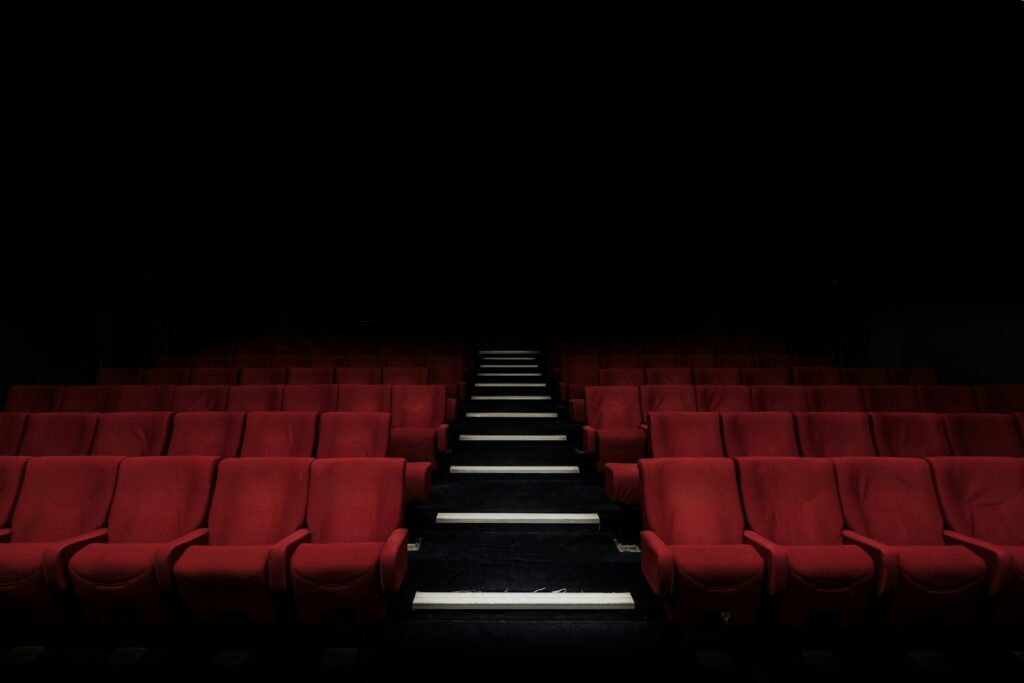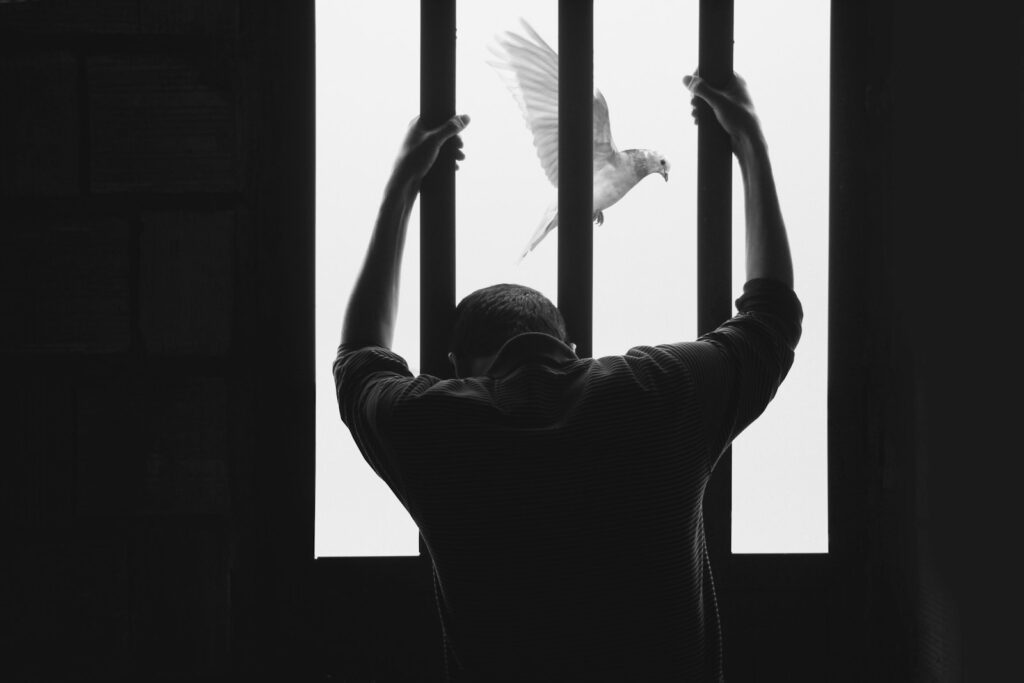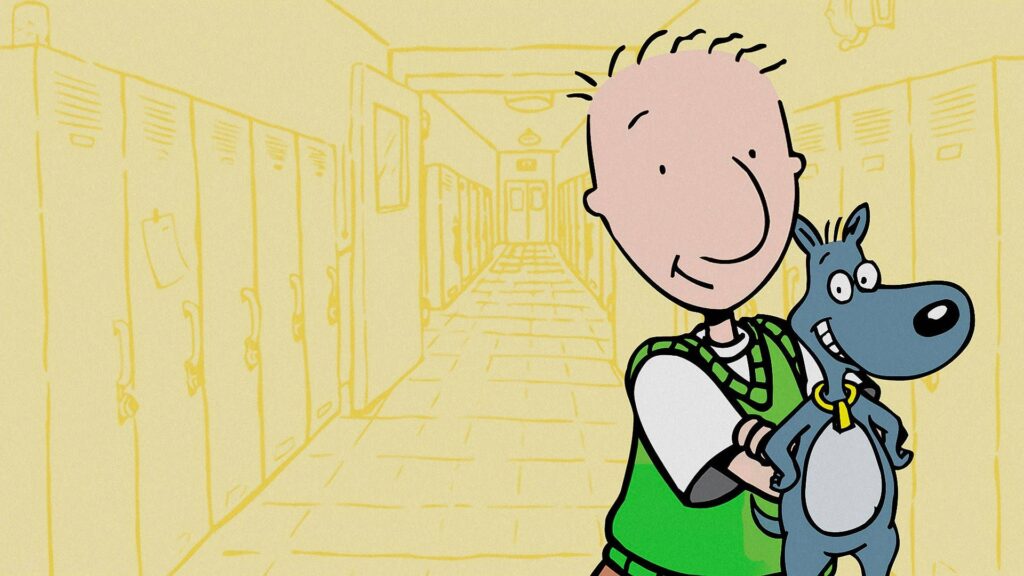
From the earliest flickering images on a silver screen to today’s cinematic epics, the depiction of death has been an integral, often unavoidable, part of storytelling. It’s a universal experience that brings with it existential dread, philosophical pondering, and a unique way for us, as viewers, to confront our own mortality by whistling past the cemetery, if nothing else. Film offers a controlled environment to explore this final frontier, allowing us to witness profound moments of tragedy, defiance, or even darkly vivacious humor without facing the direct consequences.
Yet, not all on-screen demises are created equal, and the way we frame such scenes truly matters. A list focusing on the “best movie deaths” carries a distinctly different implication than one centered on the “best death scenes.” The former, as we interpret it here, points to a collection of cinematic deaths defined by their sheer coolness, their unexpected twists, creative execution, or the profound satisfaction they deliver to the audience. These are moments where heroes achieve a blaze of glory, villains meet their karmic reckoning, and our jaws drop in awe at the audacity, disgusting commitment, or undeniable emotional catharsis unfolding before our eyes.
As we embark on this journey through cinema’s most impactful farewells, our aim has been to spotlight those instances where the death itself stands as the most memorable aspect, rather than merely the reactions of characters around a more mundane passing. We’re zeroing in on individual deaths, sidestepping mass casualties unless a single moment within them truly seizes attention. Furthermore, our selections strictly adhere to fatalities that are conclusive within the film, avoiding any instances of apparent death followed by miraculous resurrection or characters returning to life. Our scope remains on humans, former humans, and humanoid robots, sparing you the profound distress of cinematic animal demises for the focus on human drama. Prepare yourselves, because these are the scenes that linger, the ones that stay with us long after the credits roll.

1. **Father Damien Karras, The Exorcist**When delving into the profound impact of film deaths, Father Karras’s agonizing end in “The Exorcist” stands out not just for its shocking physicality but for its deep theological implications. Father Karras (Jason Miller), a weary priest grappling with a crisis of faith and contemplating leaving his frock behind, still clings to the core tenets of his belief. This conviction is desperately tested as he stands alongside Father Merrin (Max von Sydow), valiantly striving to expel the malevolent entity Pazuzu from the innocent young girl, Regan. His internal struggle imbues his actions with a raw, relatable humanity, even amidst the supernatural horror.
Exorcisms, even when conducted by the book, are far from simple, and Regan finds herself deeply entrenched within a demon whose true objective is a vengeful confrontation with Merrin over a vaguely referenced past conflict. As the demon appears to win, Karras is consumed by horror, witnessing the relentless torment of the child. In a desperate, heroic, and ultimately self-sacrificial act, he musters his remaining strength to confront the gleeful demon, bullying it out of the girl.
What prize could be more appealing to such a malevolent entity than a priest after an innocent? Yet, Pazuzu’s hold is not strong enough to prevent Karras from committing an act of horrifying defiance: throwing himself, fatally, out of the window and tumbling down the infamous Georgetown steps. This act, while appearing to be suicide—a deed that Catholicism dictates would condemn one’s soul to Hell—is recontextualized by his friend, who administers last rites to him.
In this tragic victory, Karras ultimately triumphs by virtue of his unwavering humanity and self-sacrifice, ensuring the girl’s salvation even at the cost of his own life. It is a heartbreaking victory, certainly, but one that resonates deeply, leaving viewers to ponder the nature of evil, faith, and the extraordinary lengths to which one might go for the sake of another’s soul. His fall is not merely a physical demise but a powerful statement of spiritual triumph.

2. **Quint, Jaws**Robert Shaw’s portrayal of Quint in Steven Spielberg’s blockbuster “Jaws” remains a standout, even among a cast featuring stars like Roy Scheider and Richard Dreyfuss. Quint is presented as an irascible old sailor, a man who has genuinely “seen it all” when it comes to the perils of the sea. His backstory reveals a profound, personal history with oceanic death, having previously faced it as a Navy man aboard the ill-fated USS Indianapolis. This past experience shapes his hardened resolve and singular focus on confronting the monstrous shark.
When Death once again appears before him, this time in the terrifying form of a colossal great white shark, Quint exhibits no intention of retreating. Much like Captain Ahab from Herman Melville’s “Moby Dick,” he steadfastly buckles in for the ultimate confrontation, prepared to face whatever fate may bring. This unwavering determination transforms his final moments into an epic battle of man versus nature, a testament to his indomitable spirit and a primal struggle against an insurmountable foe.
“Jaws” famously earned its PG rating despite its visceral horror, and even as it approaches its 50th anniversary, the sheer intensity of Quint’s death scene remains startling. Many a too-young summertime kid has likely been given an eyeful of the raging Quint, half-consumed and half-out of the massive shark’s maw. The scene is brutally descriptive, with his deteriorating boat around him and waterlogged devices like ropes and buoys grotesquely resembling the internal organs that are surely leaking from Quint beneath the water’s surface.
His death is not just a moment of horror but a defiant act of art, a raw and unflinching depiction of a man meeting his end on his own terms. It’s a moment that leaves a lasting impression, embodying a tragic heroism that ensures his place in cinematic lore. One can almost imagine the shark eventually joining Quint in the afterlife, where their epic struggle likely continues to this very day, cementing this scene as an unforgettable cinematic demise.
Read more about: Time-Tested Treasures: 14 Essential Older Films Every Movie Lover Needs to Experience

3. **Emil Antonowsky, RoboCop**Paul Verhoeven’s 1987 masterpiece “RoboCop” unleashed a brand of body horror in the 1980s that, in its own distinct way, matched the visceral impact of David Cronenberg’s work. While watching Officer Murphy (Peter Weller) endure lead for an agonizing half-hour before his transformation into RoboCop is a brutal experience, the demise of one of his murderers is arguably even uglier and more grotesquely cinematic. Emil (Paul McCrane) stands out among Clarence Boder’s nasty goons, a character cheerfully tormenting college kids and making light of his past jail time. His unshakeable loyalty to Boddicker (Kurtwood Smith), however, sets him on a collision course with a truly hideous end.
In the film’s climactic final act, RoboCop and Boder’s ruthless gang engage in a frenzied shootout within a chemical warehouse. The setting itself, a gross and toxic environment, subtly underscores the film’s anti-capitalist themes. During the intense firefight, Emil is knocked into a corrosive pool of nasty chemicals, initiating a horrifying transformation. After emerging, he staggers around like a distorted, melting Toxic Avenger costume, a ghastly figure under the scorching Phoenix sun, a grim testament to the potent effects of his chemical bath.
Yet, this is not the ultimate end for Emil. Boder, distracted and not looking where he is going, drives his car directly into the path of the groaning, chemically-altered Emil. The collision is brutally effective, as there’s simply not enough left of Emil’s bones or internal organs to withstand the impact. The result is a sickening wet splash of a sound effect, accompanied by a grotesque visual of his liquefied remains splattering all over Boddicker’s vehicle.
It’s a death that is both profoundly disgusting and undeniably amazing cinema, showcasing Verhoeven’s unflinching commitment to practical effects and over-the-top violence. Emil Antonowsky’s final moments are a jarring blend of dark humor and sheer revulsion, securing his place as one of the most memorable and viscerally impactful villainous demises ever committed to film. It’s a scene that is hard to forget, not just for its brutality but for its audacious execution.

4. **Spock, Star Trek: The Wrath of Khan**The release of “Star Trek: The Wrath of Khan” in 1982 delivered a profound shock to devoted fans, largely due to a masterful narrative misdirection. Rumors had been circulating that Leonard Nimoy might be departing the beloved franchise, hinting that this second “Trek” film could mark Spock’s swan song. The film initially opens with the Kobayashi Maru simulation, an unwinnable scenario where failure is inevitable and Kirk (William Shatner) watches his crew, including Spock, seemingly perish during a trainee’s mission. Many viewers, initially relieved by this simulated death, breathed a collective “whew,” believing that was the extent of Spock’s cinematic farewell.
However, Spock’s true final hour was indeed imminent and heartbreakingly real. In a climactic act of profound heroism, he sacrifices himself to save the USS Enterprise from certain destruction at the hands of Khan (Ricardo Montalban). To repair the ship’s warp drive and restore power, Spock enters the dangerously radiation-filled core, knowing full well the fatal consequences. This deliberate choice to give his life for his crew and captain underscores the Vulcan’s deep, albeit often suppressed, emotional connection to his friends and his unwavering commitment to logic that prioritizes the needs of the many.
The emotional weight of the scene is palpable, with Captain Kirk’s profound grief becoming a pivotal moment. Even William Shatner, renowned for his often theatrical emotional displays, manages to convey genuine agony as he witnesses his closest friend and comrade-in-arms die before him. The iconic exchange through the glass barrier, “I have been and always shall be, your friend,” solidifies the profound bond between the two characters and the immense sacrifice being made.
Decades later, the power of this sacrifice remains undiminished, a moment of such raw emotional impact that even J.J. Abrams’ later, less successful homage in “Into Darkness” could not truly mar its legacy (much to the continued chagrin of “Wrath of Khan” director Nicholas Meyer). The knowledge that Spock would not remain dead forever does little to lessen the potency of this scene, which continues to resonate as arguably the biggest trauma in “Star Trek” for hardcore fans, leaving an indelible mark on the franchise and its devoted audience.
Read more about: Live Long and Prosper: Unpacking the Incredible Journeys of the Last Surviving Stars from Star Trek: The Original Series

5. **Cayetano, The Coffee Table**”The Coffee Table,” a 2022 indie Spanish film, has quietly amassed a traumatized following among horror enthusiasts, many of whom are unsure how to recommend it, or even if they should. Tinged with the darkest of black comedy and built upon a premise that vastly undersells the horrific events that unfold, the movie immerses viewers in a domestic nightmare. The narrative begins innocently enough: a tired couple, new parents to baby Cayetano, engage in a petty argument over the purchase of a tacky, potentially dangerous, living room coffee table. Little do they know, bringing this seemingly innocuous piece of furniture home will irrevocably alter not just their lives, but everyone’s lives—including, quite possibly, the viewer’s.
The film, a concise hour and a half, hinges on the devastating moment when baby Cayetano and the ill-fated coffee table share their deadly interaction. The baby’s death itself is not explicitly shown, making it all the more chilling and psychologically impactful. Instead, it is masterfully conveyed through a crashing noise, the tremulous, gut-wrenching voice of his father, Jesus (David Pareja), and a few fleeting, horrifying glimpses of blood and injury. This deliberate artistic choice forces the audience to confront the unimaginable horror through implication and raw emotional reaction, making the unseen far more potent than any graphic depiction could be.
Following this pivotal, tragic incident, the remainder of the film transforms into an excruciating exploration of internal suffering. What feels like merely an hour and a half expands into an eternity for the characters and the audience alike, as they navigate the profound, silent grief and unspoken blame that permeates every scene. The film becomes an unforgettable scene of death, not just in the moment of tragedy, but in its lingering, soul-crushing aftermath.
As /Film’s own Rafael Motamayor wisely observed in a glowing but hesitant review, “either everyone should see this movie or no one should.” Such is the film’s power and its capacity to imprint itself onto the viewer’s psyche. It delves into the most uncomfortable aspects of grief and accidental horror, leaving an indelible mark. For those who experience it, the memory of “The Coffee Table” and Cayetano’s tragic fate is one that refuses to fade, prompting continuous reflection long after the credits have rolled.

6. **James Howlett aka Logan, Logan**While “Deadpool & Wolverine” may have playfully opened with a bloody, cheeky callback to the events of “Logan,” its impudence doesn’t diminish the profound message of sacrifice and doing the right thing embedded in the preceding film. If anything, it merely underlines the original’s bittersweet poignancy with a touch of sass. The death of James Howlett, famously known as Logan or Wolverine (Hugh Jackman), is crafted with such solid intent and heart that it leaves an undeniable, lasting impact on the audience and the character’s legacy.
Logan’s life has been a long, solitary journey, particularly as the mutant world dwindles around him. Even the comforting presence of Charles Xavier (Sir Patrick Stewart) offers little solace, as Xavier himself succumbs to the indignities of old age, his mind fading and often forgetting those around him. In a heartbreaking moment of clarity, Xavier only fully remembers Logan at the precipice of his own tragic death, further emphasizing Logan’s isolation and burden.
However, a new, unexpected connection begins to form with Laura (Dafne Keen), a young girl who is functionally his daughter. This burgeoning bond provides Logan with something deeply precious to cling to, a need he stubbornly refuses to admit, yet one that reawakens his latent capacity for selflessness and protection. It’s this profound connection that drives his final, heroic actions, pushing him beyond his cynical, weary exterior.
In his final hour, Logan rises above the worst aspects of his past self, defying a lifetime of pain and solitude. He snatches victory from the jaws of defeat with the very last beats of his heart, ensuring Laura’s safety and a future he fought desperately to secure. This version of Logan’s death is presented as an irreversible, definitive end, a sacrifice that will forever hold meaning within the X-Men universe. His final act is a powerful testament to redemption and the enduring power of love, making his demise one of the most impactful and emotionally resonant in modern superhero cinema.

7. **Boromir, The Lord of the Rings**Sean Bean’s legendary cinematic mortality is almost a genre unto itself, but his portrayal of Boromir’s final stand in “The Lord of the Rings: The Fellowship of the Ring” stands as his undisputed magnum opus. It’s a death that resonates with a tragic grandeur, solidifying his place as one of fantasy cinema’s most conflicted yet ultimately heroic figures. Briefly swayed by the insidious allure of the One Ring, Boromir’s inner turmoil is a testament to the Ring’s corrupting power, making his eventual redemption all the more poignant and impactful.
Yet, when the monstrous Uruk-hai attack, Boromir does not falter. Instead, he rises to the occasion with unwavering courage, positioning himself as a shield for the defenseless Merry and Pippin, and, most crucially, allowing Frodo and Sam to escape with their perilous cargo towards Mordor. Riddled with arrows, his strength waning, he still manages a final, heart-wrenching exchange with Aragorn, acknowledging him as his king. This act of self-sacrifice, despite his earlier failings, cements his transformation into a true hero, a defender of innocents against overwhelming odds.
Boromir’s death is not merely a plot point; it is a foundational moment that reverberates throughout the entire trilogy. Aragorn’s solemn promise to stand with Gondor, made over Boromir’s dying body, becomes a powerful driving force for his character arc, transforming him from a reluctant ranger into the king he was destined to be. The scene is imbued with a sorrow and melancholy that subtly haunt the subsequent films, a constant reminder of the cost of their epic quest.
Later, the lingering ghost of Boromir feels all too real as we encounter his grieving, almost forgotten brother, Faramir, and their horrific, despair-ridden father, Denethor. His demise serves as a poignant illustration of the profound personal sacrifices demanded by the war for Middle-earth, an emotional anchor that underscores the true stakes of the conflict. It’s a death that proves true heroism can emerge even from moments of weakness, leaving an indelible mark on cinematic history and the hearts of fans.
Read more about: The Most Epic Movie Deaths That Truly Defined Cinema

8. **John Coffey, The Green Mile**Stephen King and Frank Darabont’s “The Green Mile,” set within the grim confines of death row, is a narrative no stranger to profound and memorable demises. Yet, the death of John Coffey, brilliantly portrayed by Michael Clarke Duncan, transcends mere tragedy, delving into the realm of spiritual sacrifice. Coffey is presented as a character of immense misfortune but even greater benevolence, a gentle Black man who arguably embodies an aspect of Jesus Christ incarnate, burdened with the inexplicable ability to absorb the sufferings of humanity. His journey to the titular ‘Green Mile’—the aesthetically distinct corridor to the electric chair—is propelled by someone else’s heinous crimes, setting the stage for a deeply moving and morally complex narrative.
Within the narrative, the brutal method of execution is not crucifixion, but the electric chair, a stark contrast that underscores the era and setting. Despite having witnessed the horrific, monstrous death of a previous prisoner in the chair, Coffey approaches his own end with a heart full of peace, yearning for release from a world steeped in cruelty and injustice. His acceptance of this fate, undeserved as it is, speaks volumes about his profound compassion and his weary resignation to a world he cannot fully heal.
His passing is not just the end of a life, but a transfer of profound moral weight. It is then the turn of the remaining cast—and by extension, the audience—to grapple with the sins and injustices that led to his execution. The film masterfully compels viewers to confront difficult questions about capital punishment, the nature of good and evil, and systemic injustice. If you don’t find yourself questioning your own soul, or at least the societal constructs that perpetuate such tragedies, after witnessing Coffey’s serene yet devastating death, then perhaps you’ve missed a crucial layer of the film’s intended impact.
John Coffey’s death is a haunting, almost mystical event that elevates the film beyond a simple drama. It becomes a meditation on empathy, sacrifice, and the capacity for both immense good and profound evil within humanity. His quiet acceptance in the face of such a cruel fate ensures his place as one of cinema’s most unforgettable, heartbreaking sacrifices, leaving viewers with lingering questions long after the credits have rolled.
Read more about: 16 Movie Deaths That Broke Our Hearts
9. **Charlie, Hereditary**Ari Aster’s “Hereditary” is a film that expertly crafts an atmosphere of profound discomfort, intertwining themes of grief with an insidious undercurrent of demonic worship. While the supernatural elements might initially seem like mere backdrop, they are very much at the horrifying forefront of what befalls Annie Graham (Toni Collette) and her family. Before the full demonic horror takes hold, however, the film plunges into raw, unintentional, and terrifyingly real-life agony with the demise of young Charlie (Milly Shapiro).
Charlie is, without a doubt, a peculiar child. Much of her ‘weirdness,’ however, is a tragic consequence of inherited family expectations and a sinister destiny rather than any fault of her own. She was, in fact, unknowingly destined to be a host for the demon Paimon, a role that the entity isn’t exactly thrilled with initially. It’s difficult to disentangle the nascent influence of Paimon from the sheer, accidental brutality that leads to her demise, but the outcome is undeniably one of the most shocking and visceral deaths in modern horror cinema.
Nothing can truly blunt the horrifying reality of Charlie’s decapitation by a telephone pole, a moment of sickening chance that occurs during a desperate, late-night car ride. The actual spectacle of the death itself is delivered through terrifying, fleeting glimpses—a blur of impact, the horrifying sight of her soulless eyes almost subliminally burning into the viewer’s mind. This artful restraint makes the subsequent, drawn-out screams of Toni Collette’s Annie upon discovering her daughter’s fate all the more gut-wrenching and impactful.
The horror doesn’t end there; Charlie’s head reappears later as a key component in a grim, escalating ritual, ensuring that the audience is subjected to a good, lingering look at her decaying remains. This detail amplifies the film’s already intense sense of dread and violation, cementing Charlie’s death as a moment of profound shock and psychological torment. It is a cinematic jolt that establishes the film’s unflinching commitment to exploring the darkest corners of grief and supernatural malevolence.
Read more about: From ‘Beau Is Afraid’ to ‘The Apparition’: Unpacking 15 Horror Movies That Crashed and Burned at the Box Office

10. **Mufasa, The Lion King**For many, if the Wicked Witch of the West’s melting didn’t instill a primal terror of death during childhood, then a Disney classic almost certainly did. While Bambi’s mother holds a revered, albeit somewhat quaint, place in the pantheon of childhood cinematic trauma, it’s Mufasa’s Shakespearean tragedy in “The Lion King” that delivers a truly devastating, unerasable emotional blow. The film builds to this catastrophic moment with masterful tension, only to unleash a stampede that serves as the backdrop for one of animation’s most infamous betrayals.
Young Simba’s mistake, a childish curiosity that places him in peril, becomes secondary to the true orchestrator of this tragedy: his villainous uncle, Scar. It is Scar, consumed by jealousy and ambition, who gleefully flings his majestic brother into the thundering stampede below, seizing his chance to usurp the throne. The ensuing scene, where a young Simba pads up to his motionless father, his pleas for him to wake up echoing in the cavern, is a masterclass in heart-wrenching storytelling, fostering an immediate and profound sense of grief and guilt within the cub—and the audience.
Simba’s subsequent flight into the jungle, driven by this overwhelming guilt and the belief that he was responsible for his father’s death, fuels a significant portion of the film’s narrative. Mufasa’s ghost, in both literal and metaphorical forms, lingers over Simba throughout his exile, serving as a powerful guardian spirit. It is this spectral presence that ultimately helps Simba confront his trauma, guiding him toward accepting his destiny and repairing the damage Scar has wrought upon the Pride Lands.
Even with the passage of time and the comforting knowledge of Simba’s eventual triumph, the childhood horror of witnessing a proud, powerful father die—and believing oneself to be the cause—remains undiminished. It’s a scene that has moved generations to tears, a testament to Disney’s ability to imbue animation with profound emotional depth and lasting impact. Mufasa’s fall is not just a death; it is a seminal moment in countless childhoods, a vivid, enduring memory of tragic loss that refuses to fade.
Read more about: 16 Movie Deaths That Broke Our Hearts

11. **Roy Batty, Blade Runner**Sir Ridley Scott, a director renowned for his meticulous adherence to the script, found a surprising moment of improvisation that elevated “Blade Runner” to new heights. Rutger Hauer, in his portrayal of the replicant Roy Batty, offered his own poignant take on his character’s final minutes, transforming his death into something so profoundly Byronic and philosophical that it grants the synthetic being the eternal life his soul implicitly deserved. This moment, often referred to as the ‘Tears in Rain’ monologue, is a masterclass in evocative cinema.
Roy’s speech is a melancholic, almost poetic reflection on his existence, resonant even without deep contextual knowledge. He speaks of the extraordinary things he has witnessed – “Attack ships on fire off the shoulder of Orion. I watched C-beams glitter in the dark near the Tannhauser Gate.” While the specifics of C-beams or the Tannhauser Gate remain ambiguous, the imagery instantly conjures visions of beautiful, destructive grandeur in the vastness of space. It’s a portrait of awe that only Roy, a replicant with a finite lifespan, was privileged to see, and now, that profound knowledge will be lost with his fading life.
His final act is one of unexpected, instinctive mercy. Despite his desperate struggle for more life, Roy saves his pursuer, Deckard (Harrison Ford), from falling to his death. This act of compassion, performed in his very last moments, underscores the film’s central theme: that Roy Batty, a manufactured being, proves himself more human than human throughout his short, intense existence. He embodies a tragic nobility, a yearning for meaning and connection that transcends his programmed origins.
The power of Hauer’s improvised lines and his performance ensures that Roy Batty’s death is not just the end of a character, but a profound statement on consciousness, memory, and the very definition of humanity. It’s a scene that continues to be analyzed and celebrated, cementing its status as one of cinema’s most philosophically rich and emotionally impactful demises, a moment where the artificial achieved true, unforgettable artistry.
Read more about: 15 Movie Scenes Where Actors Weren’t Acting
12. **Adolf Hitler, Inglourious Basterds**In psychological circles, the concept of catharsis—the release of strong emotions—is often debated. Does it truly benefit us to experience such intense emotional releases, even in a controlled environment like cinema? When it comes to the media, however, the answer often leans towards a resounding ‘yes,’ particularly when our heroes finally corner the villain, delivering a rich, satisfying conclusion that elicits cheers and primal satisfaction from the audience. Quentin Tarantino, a director frequently at the center of critical and scholarly debate, delivered a moment that, if nothing else, should secure his lasting pride: the audacious demise of Adolf Hitler in “Inglourious Basterds.”
Tarantino’s film ventures into the realm of alternative history with fearless abandon, fulfilling a collective wish many viewers unconsciously held. As the ‘Basterds’ attempt to corner Adolf Hitler within Shoshanna’s (Melanie Laurent) burning theater, the silent, hopeful murmur from the audience is almost palpable: “It would be cool if they could get Hitler’s ass.” And then, with audacious glee, Tarantino delivers precisely that, crafting a moment of historical revisionism that is as beautiful as it is brutal.
The Basterds, led by Lieutenant Aldo Raine, pump the Führer so full of lead that, as the context wryly observes, he could effectively be listed as a Superfund site. It’s a visually impactful and viscerally satisfying scene, executed with Tarantino’s signature flair for exaggerated violence and darkly comedic undertones. This cinematic comeuppance provides a rare and profound sense of justice, a fantastical reckoning that resonates deeply with audiences.
In these often divisive times, finding comfort and unity in the little things can be surprisingly powerful. Watching Hitler meet such a definitive, ignominious end, receiving the karmic punishment he so richly deserved, transcends mere entertainment. It becomes a shared moment of catharsis, a collective celebration of a villain’s downfall that we can all genuinely enjoy. This daring, unforgettable death scene stands as a testament to cinema’s capacity for wish fulfillment and its ability to deliver moments of richly deserved, unapologetic satisfaction, carving out its unique place in film history.
As we conclude our journey through these 12 unforgettable cinematic deaths, it becomes clear that these aren’t merely scenes of characters expiring. They are meticulously crafted moments that challenge, provoke, and resonate, each one a testament to the power of storytelling. From the defiant last stands of heroes to the grotesque ends of villains, and the heartbreaking, accidental losses that leave a lasting scar, these demises compel us to confront mortality, question morality, and appreciate the indelible artistry of filmmaking. They are the moments that stick with us, whispering their stories long after the final frame, reminding us why we return to the darkness of the theater again and again.






